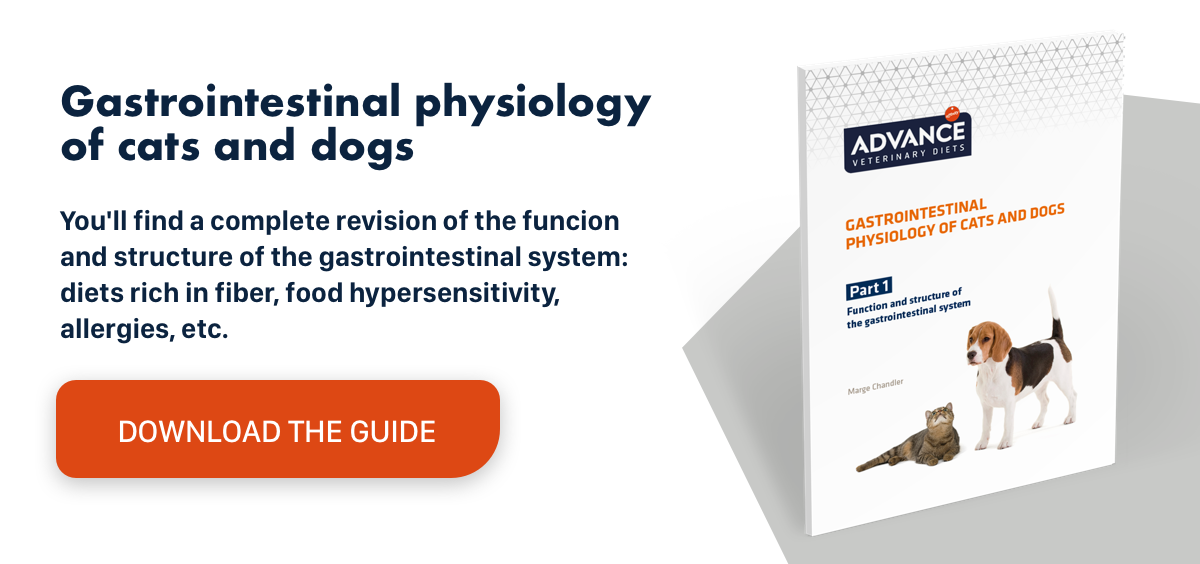Constipation in cats: characteristics and risk factors
Constipation in cats: what are the causes?
Constipation is defined as the less frequent elimination of hard, dry stools that involve more strain during defecation. If constipation is suspected, it is important to obtain information about urinary behaviour, as difficulties when urinating can be confused with issues related to bowel movements, especially in cats with lower urinary tract obstruction. Cats that present difficulties prior to defecation normally have constipation associated with obstructions or functional disorders. In contrast, difficulties during defecation or those which persist at the end of the process are often associated with diarrhoea or inflammatory disorders of the colon and/or rectum.1
Constipated patients are sometimes brought to the clinic for diarrhoea, because the diarrhoea noted by the owner is actually caused by a small amount of liquid and faecal matter passing around the faecal bolus in the colon or rectum.1
A study published recently set out to identify the risk factors, clinical history, physical exams and clinical/pathological findings in cats visiting the emergency department for constipation.2
Their review of medical records identified 189 cats with constipation or obstipation who were treated at, and later discharged from, the emergency department of a university veterinary hospital between January 1, 2011 and July 31, 2017. Data were collected on the subject’s admission, medical history, physical exams, clinical/pathological findings and the eventual treatment provided. Ninety-nine cats admitted to the same department for other complaints were used as a control group.2
Treatment variables analysed included enemas, intravenous or subcutaneous fluid therapy and oral lactulose. Treatment efficacy was assessed according to notes from the medical report including whether a defecation process had been reported after the enema in the emergency department.2
Analysis of the sample of 189 cats showed that sex was not a risk factor for constipation. Cats with constipation were significantly older than the control group (average age of 10 vs. 6 years, p<0.0001). Similarly, constipated cats had a significantly higher body condition score (BCS) than subjects in the control group (mean of 6 vs. 5, respectively, P=0.0004).2
In theory, the increased risk with age coincides with a higher incidence of other comorbidities that can cause constipation, such as diabetes, arthritis, chronic kidney disease and other systemic diseases. However, after conducting a multiple logistic regression analysis, age and BCS were both still significant, which suggests they are independently associated with constipation.2
Furthermore, the authors reported cats with chronic kidney disease or previous episodes of constipation had an increased risk of constipation (P=0.0046 and P<0.0001, respectively).2
The study does not state the incidence of megacolon in cats, although it is important to bear in mind that it consists of a persistent and irreversible distention of the colon’s diameter, which may be idiopathic and is one of the main causes of chronic constipation.2
In conclusion, the study established that constipation is a significant cause of morbidity in cats and a relatively common cause of emergency department visits. They also found that age, obesity and previous cases of constipation or chronic kidney disease are risk factors.2
